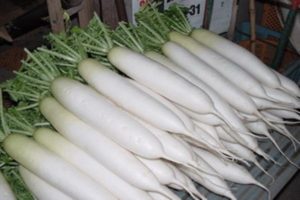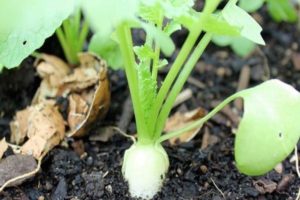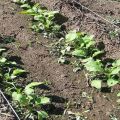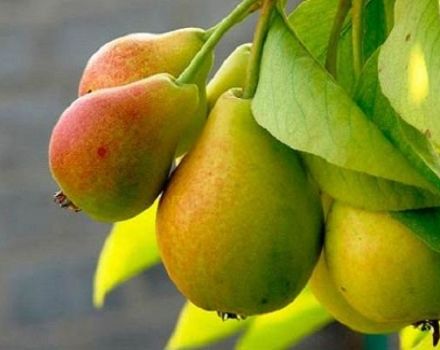Growing and caring for black radish in the open field, how and when to plant
Many gardeners are engaged in the cultivation of black radish. This crop is easy to buy in the grocery section of the store. But a root crop from your own garden is much tastier.
Radish dishes diversify the dacha menu. In winter, she is a supplier of vitamins and minerals. Traditional medicine has accumulated enough recipes from root vegetables.
The culture is easy to grow. Even an inexperienced gardener succeeds in it. To obtain a high yield, you should follow the rules of agricultural technology.
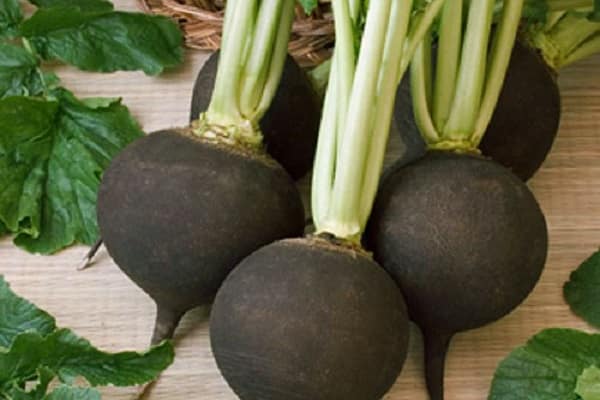
Description of the variety
Breeders offer many varieties of black radish. They differ in ripening period. Common signs:
- The plant represents the Cruciferous family. Relatives: cabbage, turnip, radish.
- Forms a root crop in the first year after planting. In the second - the peduncle.
- A rounded root crop grows from 200 to 600 g. The skin is black, dense. The pulp is white, juicy. The taste is spicy, sometimes pungent.
- The plant has green pinnately dissected leaves.
- Seeds are small, dark, round.
- In terms of ripening, it is divided into early (40-50 days from germination to harvest), medium (50-65 days) and late (100-120 days) varieties.
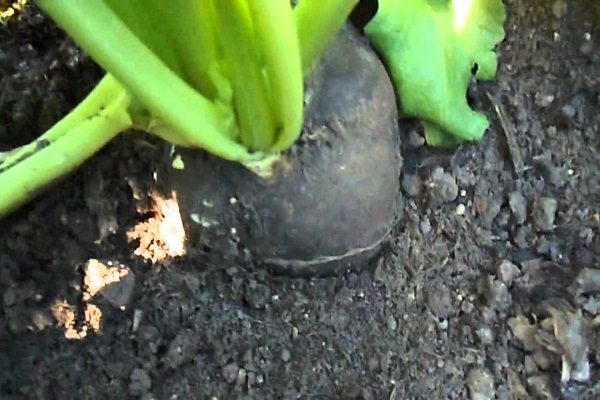
The radish is unpretentious. It's easy to look after her. A distinctive feature of the variety is cold resistance. The plant gives a consistently high yield.
Gardeners prefer the cultivation of winter (late) nigella. It has a denser and pungent pulp. Stores well.
Seed preparation
For sowing, you can use purchased seeds or collect from a previously grown radish.

Getting your own material
Summer residents are interested in how to get seeds themselves. To do this, plant the root crop of last year's harvest. It should be level, free from damage, with a healthy growth point.
The plant will release a peduncle. It should be tied up. To prevent the rash of mature seeds, it is recommended to tie the flower stalk with gauze. After ripening, the stem should be cut, dried, then threshed.
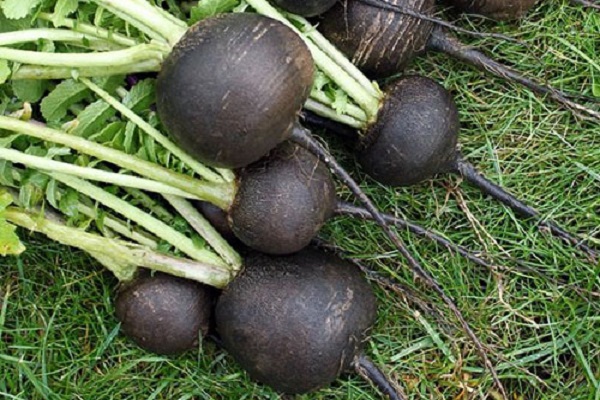
Separate debris and stem particles from the seeds. Store in a jar with a tight-fitting lid. The year of harvest should be written: this will help avoid sowing seeds that have lost their germination.
Presowing work
Before sowing, the gardener should pre-prepare the seeds. How to proceed:
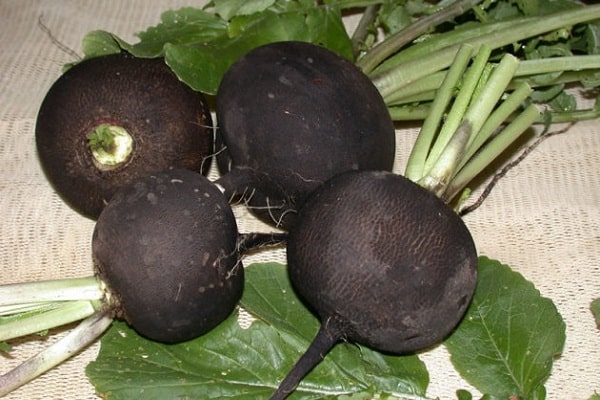
- Seeds from well-known manufacturers are pre-planted. You don't have to do anything with them.
- Own seeds should be tested for germination. Pour 20 pieces into a glass of water. Stir.The full ones will sink to the bottom, the empty ones will stay floating. Count the full, divide by 20 and multiply by 100. This is the germination percentage. It determines how much seed is required for sowing.
- Disinfect your own seeds in a solution of potassium permanganate. The solution is dark pink.
- To accelerate germination, soak in a solution of potassium humate for 30 minutes.
Some gardeners, for hardening and increasing germination, heat the seeds for 2-3 hours in a warm aqueous solution (40 degrees Celsius). Then they are washed in cold water and dried.
Radish planting rules
Chernushka is an unpretentious culture. It is easy to grow it in the garden. But you need to know agricultural technology. The size and quality of the crop depends on the exact implementation of the rules.
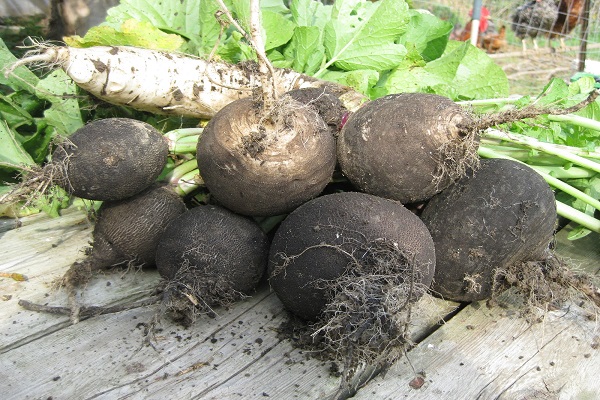
When to plant?
Summer residents are interested in: missed the sowing dates, whether it is possible to plant later. Compliance with the regime is necessary to prevent shooting culture. Radish is a culture of short daylight hours. With an increase in the length of the solar period, it throws out a peduncle.
Sowing time:
- April - early varieties;
- may - early ripening;
- early-mid July - winter.
Some gardeners remember: they removed the garlic - it's time to plant winter radish.
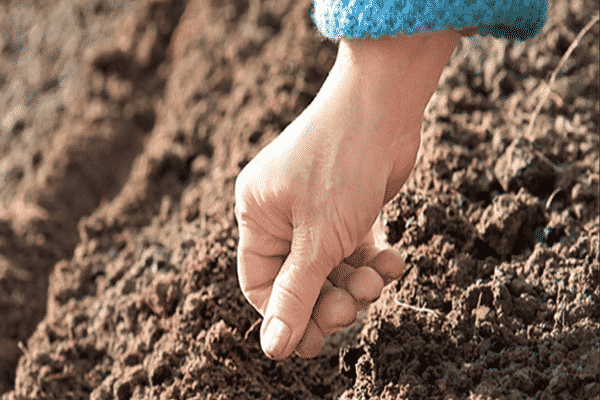
Where to plant?
The culture loves sunny areas with light fertile soils. They must pass water and air. It is worthwhile to provide for a water flow: the plant loves moist soil, but does not tolerate waterlogging.
Soil reaction: neutral or slightly alkaline. Acidic is neutralized with dolomite flour, lime or ash.
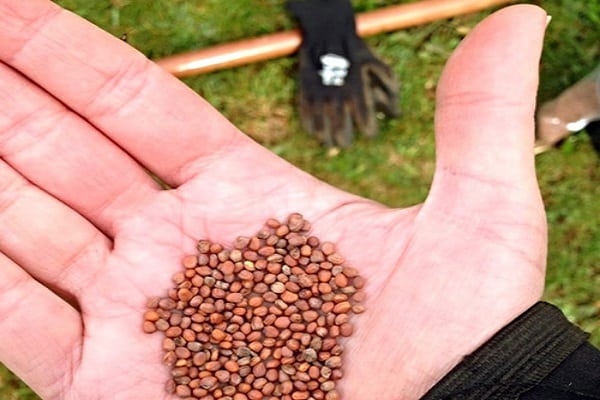
When planting in any open field, it is required to observe the crop rotation of vegetable crops. It is forbidden to plant radish after radish and other cruciferous species. Excellent predecessors are courgettes, cucumbers, tomatoes, and garlic.
If there is not enough space, it is recommended to plant radish as a compacting crop for tomatoes, potatoes, onions.
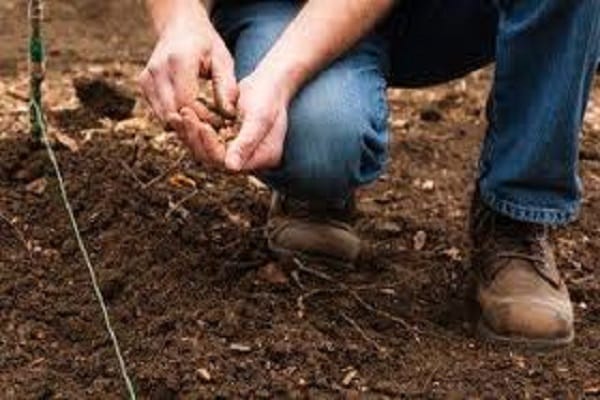
How to plant?
To obtain a high yield, the plant should be planted in a square-nested way. The distance between adjacent holes should be 10-12 cm. Early varieties are planted denser (8 cm), and later ones less often (15 cm).
It is recommended to deepen it by 2-3 cm. Sow 3 seeds in each hole. The soil should be kept moist until germination.
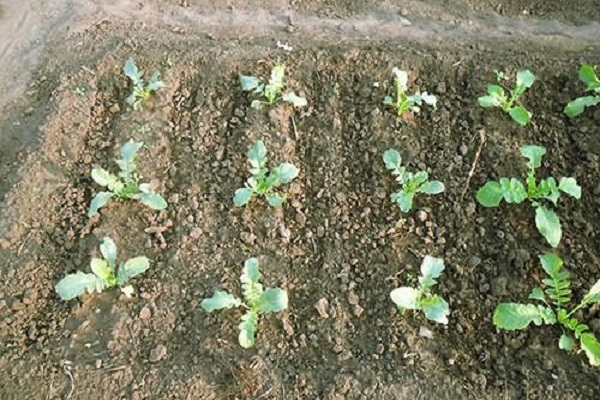
Care features
Radish is an unpretentious culture. But it requires some care.
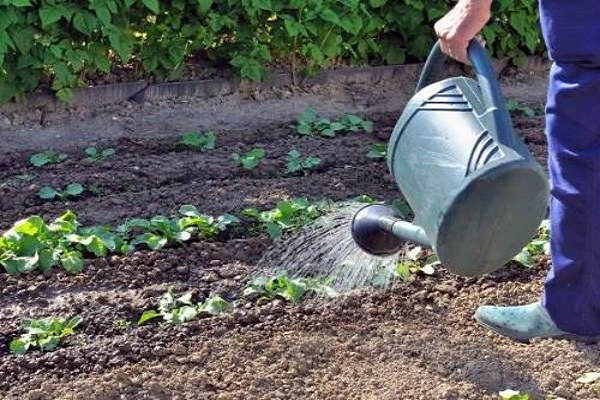
Thinning
The event provides the gardener with even large root crops.
When 3-4 true planting leaves grow back, it is recommended to thin out the first time. The weakest sprout must be removed. Thin again after 3 weeks. The strongest sprout remains in the hole.
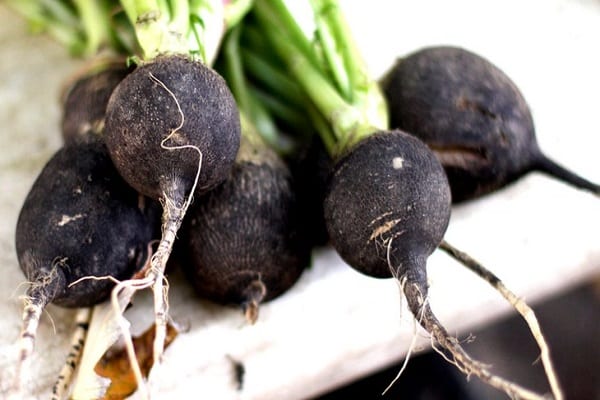
Loosening
The radish does not tolerate the crust formed on the soil surface. It is recommended to loosen the garden bed after rain. The procedure destroys the channels through which moisture evaporates. Remember: loosening is “dry” watering.

Watering
The plant requires uniform soil moisture. The alternation of dry periods and watering leads to cracking of the root crops.
Early varieties require hydration weekly, later ones - 2 times a month. Watering is recommended in the morning or evening (when the heat subsides). Water should not fall on the tops. Drip irrigation should be provided.

Top dressing
For early varieties, 2 dressings are enough. In winter - 3. The first feeding is recommended with nitrogen after the appearance of cotyledon leaves. For the rest of the dressings, a mineral complex (nitrogen: potassium: phosphorus) should be added. 2 weeks before harvesting, feeding should be stopped.
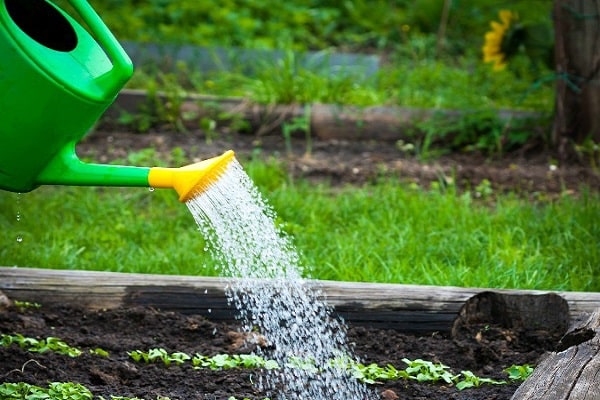
Radish leaving in color
Sometimes gardeners get flowers instead of harvest. Plants go to the arrow. There are several reasons:
- non-compliance with landing dates;
- excessive dryness of the soil;
- thickened plantings;
- no weeding;
- hot weather.
Compliance with the rules of care will avoid blooming.
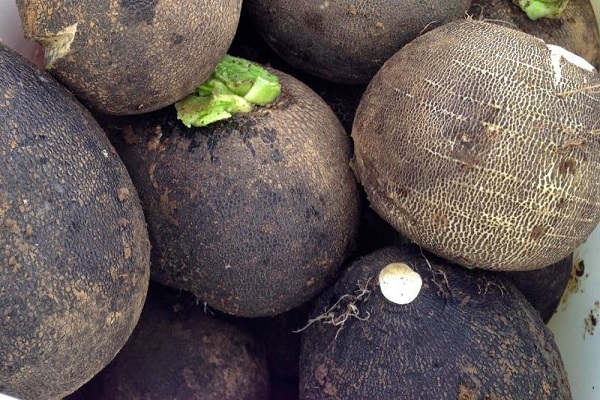
Protection against diseases and pests
The root crop is affected by the cruciferous flea.To combat it, it is recommended to dust the plantings with ash or makhorka. Joint planting radish and onions.
To combat slugs, the edges of the ridges are sprinkled with lime or crushed eggshells. Some gardeners use insecticides.
The plant is sick with powdery mildew, mosaic. Compliance with the rules of agricultural technology will help prevent diseases. Sometimes it is wise to use a copper-containing treatment.

Harvesting and storage
The radish should be harvested in a timely manner. Early varieties are dug up as they ripen. It is recommended to store them in the fruit compartment of the refrigerator. The term is 7-10 days.
Winter radish is dug up at the end of October before the first frost. For harvesting, you should use a pitchfork: they hurt the roots less.
The radish must be freed from the tops, dried in the shade and stored in an underground or cellar. Sometimes containers with crops are filled with sand. It is necessary to maintain a humidity of 50-70 percent in the room: otherwise the roots will dry out.

